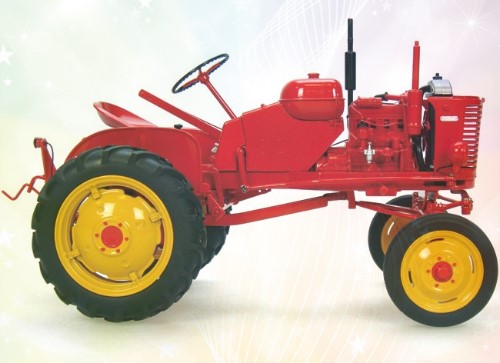Massey-Harris Tractors: owner’s, service and maintenance manuals, spare parts manuals & catalogues, wiring diagrams, schematics free download PDF
| Title | File Size | Download Links |
| Massey-Harris 20K Operating and Service Manual [PDF] | 4.8Mb | Download |
| Massey-Harris 44K Tractors Operating and Service Manual [PDF] | 4.7Mb | Download |
| Massey-Harris Pony Shop Manual [PDF] | 7.1Mb | Download |
| Massey-Harris Spare Parts Catalogue [PDF] | 2.8Mb | Download |
| Massey-Harris Tractors Shop Manual [PDF] | 28.4Mb | Download |
Massey-Harris Pony 11, 14, 811, 812, 820, 821, and MF 21
In North America, tractors of the lowest-performance class were also manufactured and marketed. Massey-Harris was likewise interested in this performance class. Therefore it created the pony 11. In this category, competitors included the John Deere L, the Allis-Chalmers G, and the IHC Farmall Cub. Customers for these tractors came from tiny sideline businesses, nurseries, and huge corporations that used them as court tractors.
1947 saw the start of series manufacturing of the Continental Motor N62, which Continental supplied. He was powered by gasoline and had a one-liter displacement. 11 horsepower was sent to the rear wheels using a gearbox with three forward and one backward gear.
Despite the vehicle’s short wheels, high ground clearance was achieved with portal axes at the front and rear. The engine sat on a cast frame, and a support tube extended rearward, similar to support tractors with an intermediate axle for the attachments’ operation.
Initially, the tractor sales were rather satisfactory, but as the 1950s progressed, the quantity sold steadily fell. Finally, in 1954, manufacturing was halted due to the sale of more than 28,000 copies.
Massey-Harris Pony 14
The industrial variation Pony 14, constructed from 1951 to 1954, remained a true rarity with just 74 examples. To transport huge loads, such as freight wagons, load barges, or even airplanes, he was equipped with a fluid coupling in addition to the standard connection. Automobiles were utilized as “Fluid Drive.” Consequently, it achieved a jerk-free start with a heavy load without overloading the regular clutch. The front axle was often spring-loaded.
Massey-Harris Pony 811/812/840
Early in the 1950s, Massey-Harris realized that Europe, with its many small enterprises, was a suitable market for compact tractors. So, in 1952, when manufacturing began in France with the Continental engine, the name was changed to Pony 811 to differentiate it from the Canadian variant.
However, Simca in Europe quickly developed a suitable engine. The gasoline engine, which was also used in the Simca Aronde and several other automobiles, initially had 40 horsepower but was throttled down to 15 horsepower for the tractor. For this, the engine-carrying cast frame had to be modified as well.

Massey Harris Pony 812
In this new construction, the name has been changed to pony 812, and in some sales regions, pony 840 as well. The tugs became a bestseller, with over 50,000 copies being sold.
Massey-Harris Pony 820/821/MF21
In Europe, sales of gasoline-powered tractors increased throughout the 1950s. Massey-Harris also saw this and sought an alternative to diesel operation. The D621 engine was discovered in Hanover near Hanomag. The two-stroke, the two-cylinder engine, was rated poorly, but it was ideal for driving the little tractor.
According to published sources, the performance of the one-liter Hanomag engine was set at 18 horsepower. Despite the fact that all of the versions I photographed had 20 horsepower, there were evidently variations in this regard. The transmission has five forward and one backward gear.
In certain regions, the tractor was now known as the Massey-Harris Pony 820 or MF21. In 1959, after a minor redesign, Pony 821 was renamed. In the building era from 1957 to 1961, sales success was reached again, and over 40,000 copies arrived to the consumers.
